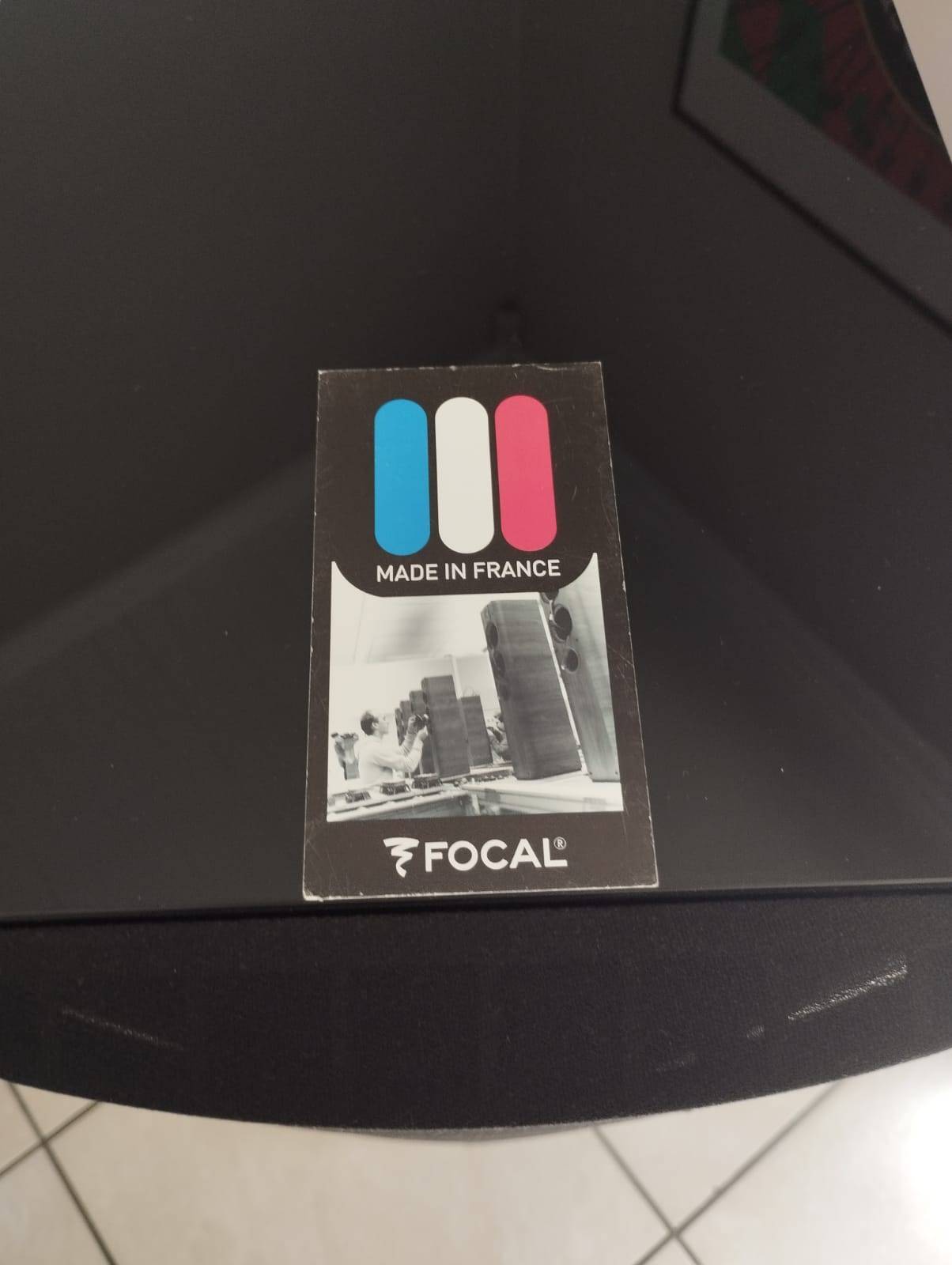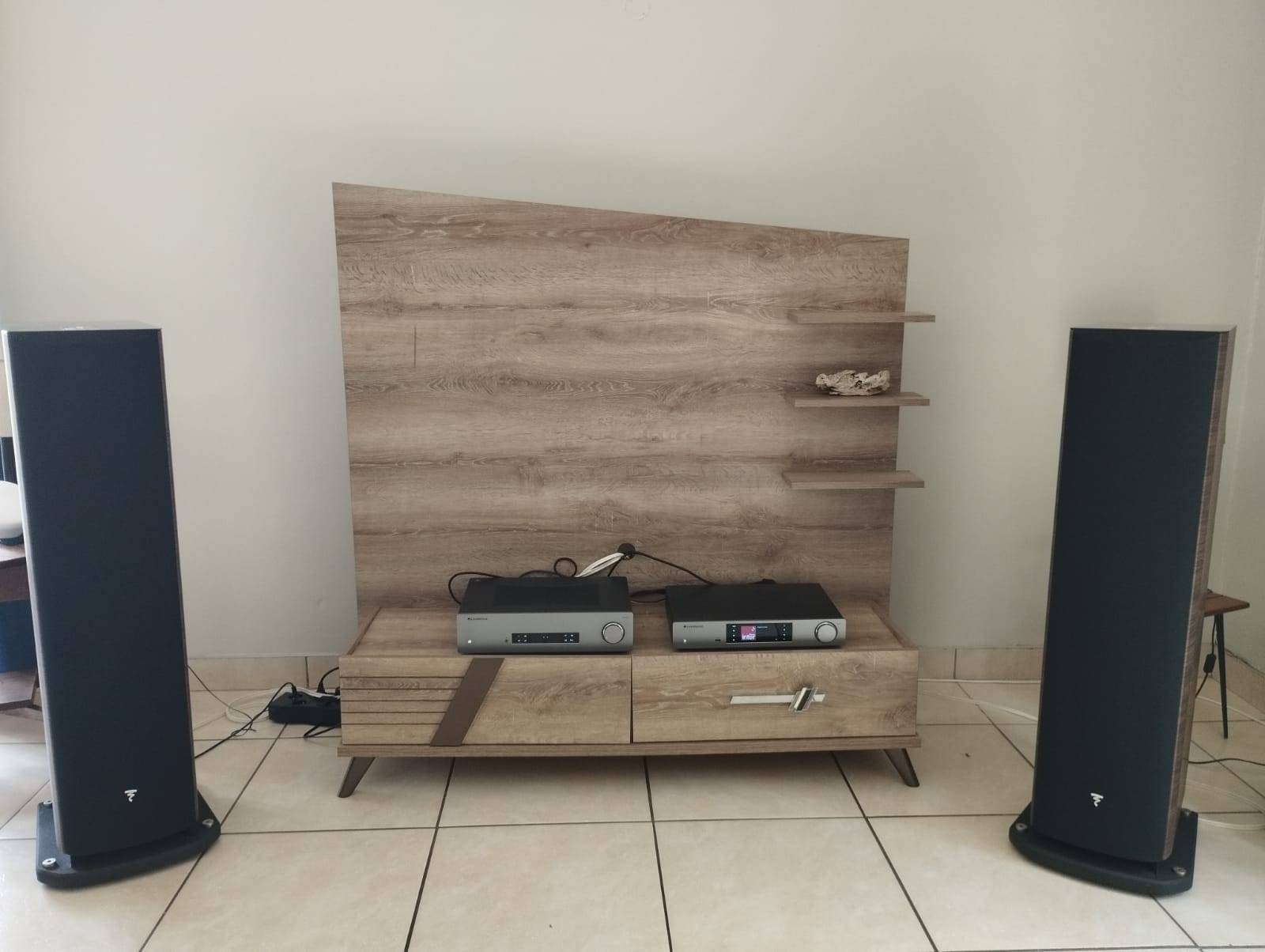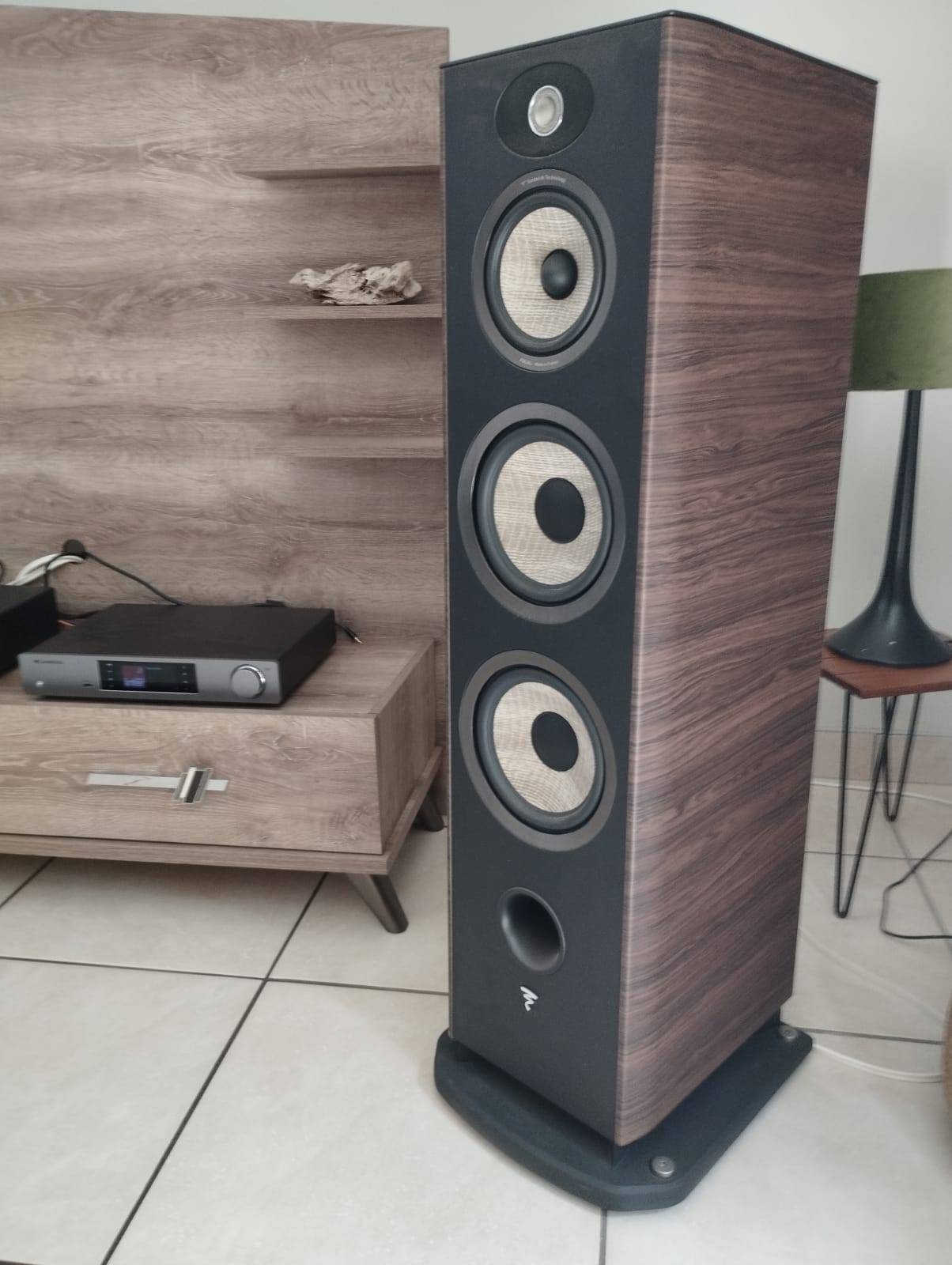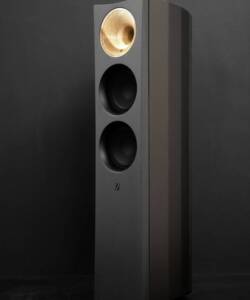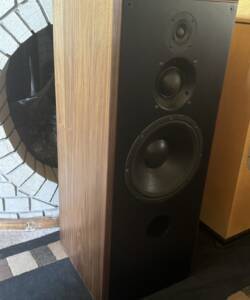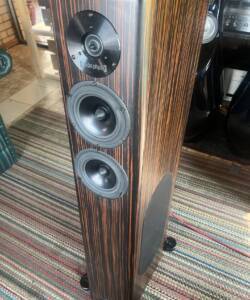Focal Aria 926 Floorstander Speakers (Noyer)
Original price was: R99,000.00.R58,000.00Current price is: R58,000.00.



Focal brings back golden memories. I was in my early twenties when I owned a Citroen Xsara. What do you put in a French car? Right. French speakers. Already obsessed by ‘the better sound’ I sound proofed the doors, installed a Focal Utopia composet powered by the biggest amp from Alpine. Back in those days, Alpine was ‘the’ reference. The amp was huge, big and heavy and put out 2 x 400 Watts. The guy from who I bought it from ran his complete system on it: 4 speakers and a sub! I used it to feed the 16,5cm Focal Utopia composet. I even used Kimber speaker cable. When I sat in the back, it was like listening to a home audio system: stage, depth, warmth and incredible deep bass for the seize of the speakers. The madness is still here. As I almost turn 50 and just got myself a BMW hybrid active tourer, I’m looking at Focal again. Browsing trough their website, I noticed an impressive lineup of home audio speakers. Time to reconnect!
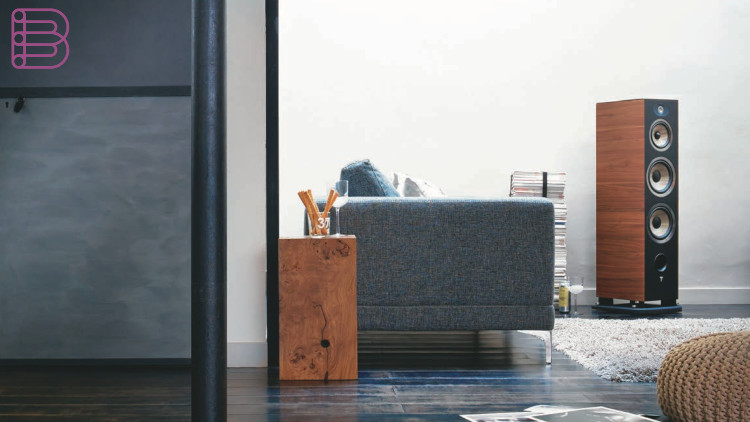
Pardon my French
Focal is one of the few speaker manufacturers of today that relentlessly invests in research and development. Let’s be honest here, there are a lot of manufacturers that design a nice cabinet, put in OEM units in there and think that making a speaker is the same as putting together a passive filter network. That’s not the name of the game! When a speaker manufacturer is designing a midrange or bass unit, they are looking for materials that are both stiff and lightweight. Stiff to avoid distortion and lightweight for fast response. Focal patented FLAX. Oooh yes, flax as in making linen. The French manufacturer mixes it up with fiberglas. Visually you get brown-flamed cones. Let’s get this FLAX party going…
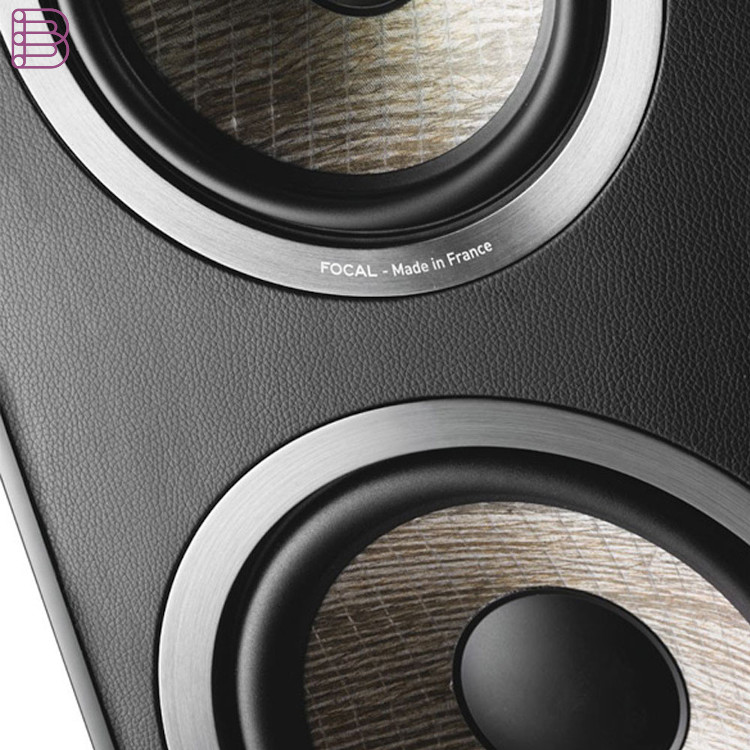
Aria fresca
If we take a look at the Focal Aria range, we almost end up right in the middle of things. The magic starts at Chorus, goes up to Chora, Aria K2 to end up right at the Aria 900 spot. A sneak peak to the top of the mountain? Moving on up is the Kanta line up, Sopra and the pinnacle Utopia III EVO range. Welcome to your worldwide introduction to a pristine stereo and dynamic home cinema loudspeaker offering. The Focal Aria 900 range starts with the Aria 906 bookshelf. Further up the ladder are 3 floorstanding models: Aria 926, Aria 936 and Aria 948. For home theatre enthusiasts, Focal offers an Aria CC 900 center speaker and Aria SR 900 surround speakers. If you need one or more subwoofers, you need to look at the Focal Sub 1000F, which shares the same Flax cone technology.
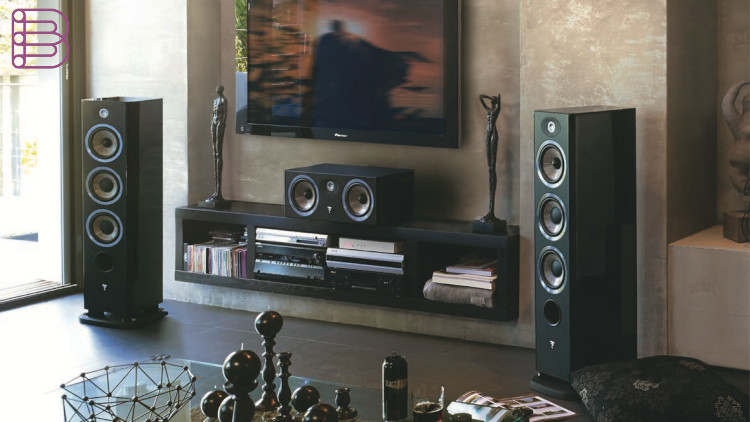
Ace of the Aria’s
Flagship Focal Aria 948 is a very potent floor standing loudspeaker, just by the looks of it. Although its rather traditional design approach, it will conquer the hearts of many music lovers and their wives. It’s a mighty impressive tower that radiates authority and demands instant humbleness just by looking at it, despite the chosen finish. And there are plenty to choose from: black high gloss, noyer, prime walnut finish, all with leather-effect coated front panel. Whatever finish you pick, it will make the Focal Aria 948 shine as the most valuable part of your interior. And I’m talking about the speakers with the fronts still on! Looking under the hood we find a 25mm TNF tweeter with poron suspension, a 16.5cm Flax midrange, double 21cm Flax woofers and multiple-port system. The front port offers more impact, while the floor-facing vent increases depth. Just looking at the specs of these speakers should stimulate your interest. Focal notes a frequency response from 37Hz up to 28kHz, with the lowest frequency point being 31Hz (at -6dB). With a nominal 8Ohm impedance and a 92.5dB sensitivity, powering these beauties should be child’s play. The recommended amplifier power is rated from 40 to up to 350 Watts, offering tons of suitable amplifier choices. It ain’t over until the fat lady sings. Fat she is: 35Kg per speaker is above average for a speaker in this price range. She stands 115cm tall. But how does she sound?
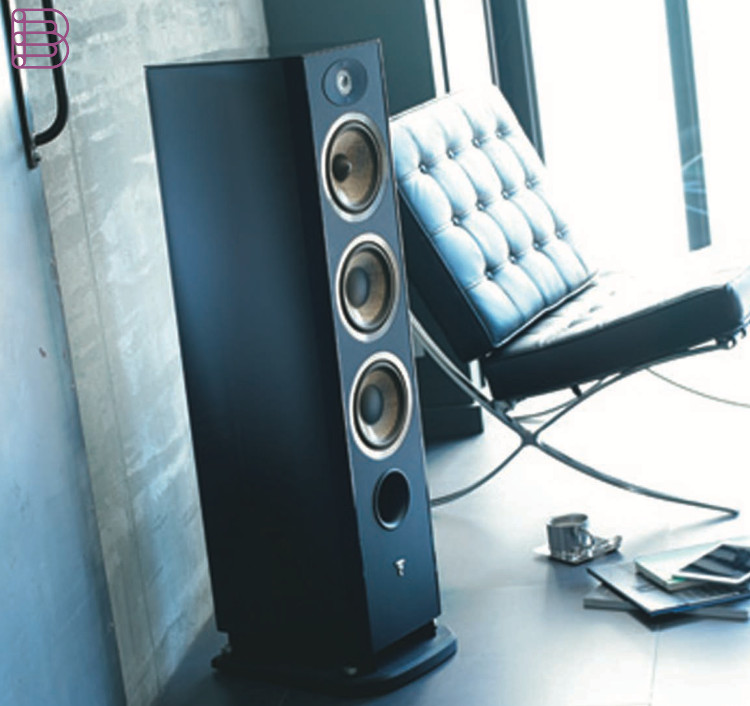
Staggering real life performance
Surprised, no amazed was the first word that came to mind when listening to the first musical efforts of the Focal Aria 948. It’s a big speaker, so of course some expectations were in place. When I heard Catherine getting started with ‘Old folks’ it immediately became clear that I’d stumbled on a hidden diamond. The guitar and double bass were well separated, each with a leading identity to achieve a full musical experience. Bass response and extension was above average.
No Dire Straits involved with this version of Brothers in arms. Only the lyrics are the same, but boy is this a wonderful rework of the original. The lead male voice has authority, weight and a pleasing natural warmness. I think they added an extra octave to his bass range in the studio. The human voice doesn’t reach that low, but it sounds so inviting. Female backing vocals fill the stage left and right. You van distinguish every voice neatly. What a great sweet spot!
I wanted to hear more and different voices. Continued with Moving on from Leonard Cohen. The Focal Aria 948 is what we call a people pleaser. IT offers a very accessible sound that you can listen to for hours without any listening fatigue. That being said, these French are very well capable of reproducing character, personality and emotion. Thanks for the dance is the musical testament of Leonard Cohen. You hear that in all tonalities. All the hurt, misery and defeat can be appreciated by the great capture and reproduction of his voice.
Are we doing it for the fun? Vestbo trio sure is. I’m all about passion for music. But so are they luckily. I really enjoyed their previous album Gentleman. It was a tribute to rediscovering dynamic recordings. The war to loudness and stuff, remember? Reflector is yet another great album, a little darker in general but very pleasing to the ears. The opening track got me tapping my foot and nodding my head instantly. All credit to the Focal Aria 948 and its involving and engaging way of communicating.
The Focals can produce a wide and deep soundstage. Proof of this was provided by the baroque track ‘Miserere’. Depending on the system level you are transferred into a big church or cathedral where the choir is positioned behind the altar at different heights. Although this looks (sounds) like a straight forward track, it’s in fact a very complex piece of music. True quality speaks when speakers are able to unravel the different layers in this recording. And yes, the Aria’s are very capable, offering a gateway to high end performance.
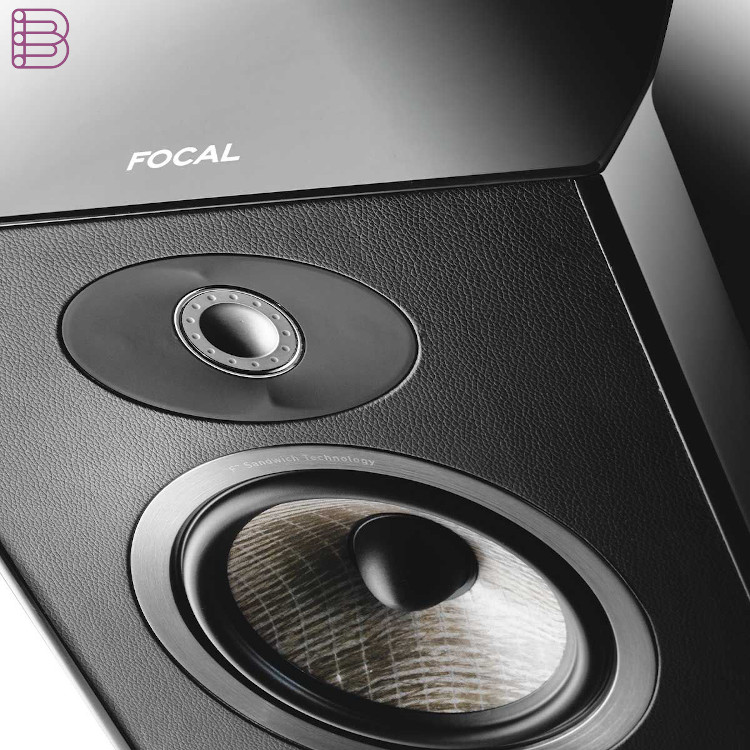
Price
€1.799 per piece for the Noyer finish. The black high gloss and prime walnut finish are priced €1.899 per piece.
Focal Aria 948 Review

If I had to choose a single term to summarize my experience with the Focal Aria 948, it would be “detail.” And, as I will explain, this descriptor encompasses different forms and senses of the word across myriad aspects of my reviewing time, from setup to audition.
Although I’m a self-described “audiophile by osmosis” (not to mention a lifelong music junkie), I’m still acclimating to the finer technical points of hi-fi. Even at that, as soon as I took my first listen to the Focal Aria 948s I knew immediately that they were dramatically different than the PSB Imagine X2Ts I reviewed in Issue 253—and that I would have to adjust my ears from the PSB speaker’s darker balance to the Focal Aria’s brighter, more neutral one. Call it a night-to-day difference. (Or perhaps an apples-to-oranges one, given the near-polar differences in price, configuration, design, etc. between the two speakers.)
The first time I experienced Focals was at the Rocky Mountain Audio Fest this past year—where I heard the esteemed French manufacturer’s flagship Grande Utopia EMs. (Interestingly, they were demo’d in two rooms nearby each other, with one pair driven by VAC tube amps and the other by Soulution solid-state—practically a head-to-head battle!) In fact, those same Focals made it to the top of my favorites list from that show. So I jumped at the chance to review any speakers from this company, but especially ones that, at $4995, a greater number of folks might be in the market to buy.
A three-way, bass-reflex floorstander, the 948 is the top model in Focal’s Aria 900 line. Like all the transducers in the 900 Series, the 948 uses Focal’s unique Flax sandwich drivers—two 8″ woofers and one 6 ½” mid/bass in a vented enclosure—along with an aluminum/magnesium alloy TNF tweeter with Focal’s exclusive inverted dome. The tweeter’s new suspension system uses Poron, an open-cell polyurethane microcellular foam designed to ensure dimensional stability and to minimize material degradation.
Speaking of materials, the exclusive Flax membrane fiber used in the woofers and the mid is an “eco-textile,” and looks the part. In an au naturel way, it does resemble raw flax/linen in its variable, slightly stripey gradations of muted greyish, straw-like tans and beiges. As well as adding a striking yet subtle design element to the speaker’s appearance, the membranes have desirable structural properties: They’re light and stiff, but well-damped, for better timbral neutrality and sharper definition. Indeed—as I’ll soon describe—the degree of detail and neutrality I heard with the Arias was rather astounding, particularly for loudspeakers in this price category.
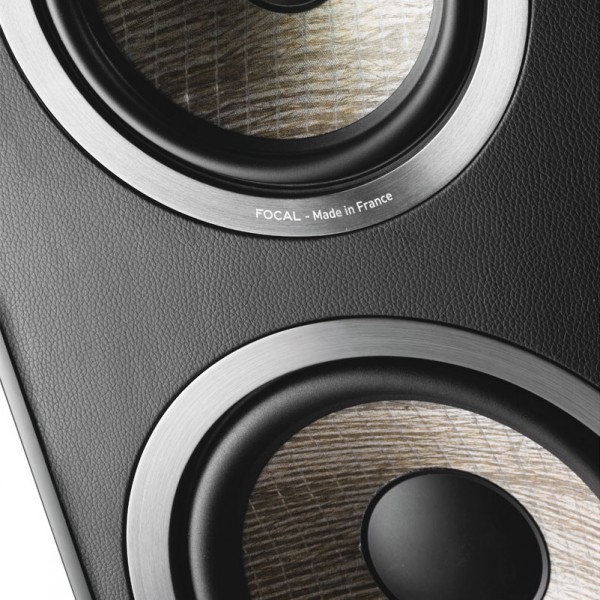
The 948 weighs in at a hefty 77 pounds, and its handsome MDF box has the sturdy feel you’d expect with such quality drivers. The finish is vinyl, but looks very much like wood veneer. In classic Gallic fashion, Focal clearly focuses on and values manufacturing precision. And across all aspects, its attention to detail shows. But consider that while details play an essential role in the pleasures we take from high-end audio, the devil is also in them. Setup of these loudspeakers proved rather challenging, for instance.
According to Focal’s online catalog, the Aria 948 was designed to reproduce “the very essence of acoustics for those who are passionate about music.” By contrast, the corresponding blurb for the slightly smaller and less powerful Aria 926 model includes the phrases “easy to install” and “all kinds of music lovers will be thrilled with its acoustic qualities.” Without seeking to read too much into ad copy, this does rather support my impression that, while in some ways a friendly speaker—it doesn’t require heaps of power to drive, for example—in other ways, the 948 is designed less with novices than devoted audiophiles, who are a bit more obsedé, in mind.
The user manual offers better guidance in certain respects rather than in others, but it does contain some helpful diagrams. The instructions for attaching the stands consist only of a tiny diagram; happily, more pages are devoted to proper speaker placement and relative positioning (the 948s require a fair degree of toe-out). Although a few troubleshooting tips are also included, the set-up process proved to be more varsity-level than I’d expected. So I was glad that I enlisted JV for assistance with set-up detail, and to point me in the right direction for fine-tuning the various electronics (and subs) we paired with the 948s. While setup (as well as break-in) definitely took a great deal of time, energy, and patience, boy, did those efforts ultimately pay off!
Upon a very first listen, what struck me immediately was the degree of detail and transparency (so far as one can claim this about sources that aren’t mastertapes). Mind you, this was straight out of the box, before any break-in. My inaugural tunes were the first couple of cuts from the English Beat’s Special Beat Service LP [MoFi], “I Confess” and “Jeannette,” both of which boasted incredibly crisp percussion, razor-sharp definition, and high-octane transient speed—partly thanks to the Odyssey Stratos solid-state amps’ driving energy. In stark contrast to the aforementioned, darker-balanced PSBs, I immediately recognized that the 948s deliver a far more neutral sound, quicker transient response, and a greater amplitude of treble energy. During the early break-in, these traits resulted in some occasional flashes of brightness and harshness in certain reaches of the upper midrange (the horns on the tracks mentioned above, for instance), but upon further listening (and swapping of electronics), I came to realize that these mild concerns were partly owed to the way certain albums were recorded, and partly to the 948’s more “top-down” treble and upper-midrange balance. I also guessed that the design of the tweeter was playing a role, as well. Focal’s inverted dome uses a waveguide that focuses the sound and limits dispersion. As a result, it can almost take on some hornlike qualities, offering enhanced precision, but also maximizing directivity. This could be heard loudly and clearly in music where the treble ranges of certain instruments—such as flutes, piccolos, and some brass—were spotlighted. As I’ll note, this occasional treble brightness improved markedly after some break-in time and fine-tuning set-up adjustments. (A disclaimer: I might be more sensitive to treble than most. JV joked that I should become his “treble detector.”)
Next I spun Brian Eno and David Byrne’s groundbreaking 1981 LP My Life in the Bush of Ghosts (the remastered and expanded 2006 version). The complex layering and interplay of this experimental recording’s unconventional vocal tracks, multifarious instrumentation, and oft-strange sampling made for a fascinating listening experience. The speakers’ accuracy and resolution served the Eno/Byrne disc well, underscoring its wildly diverse East-meets-West percussion and rhythms, particularly on “Help Me Somebody” and “The Jezebel Spirit,” which were also presented with pretty deep and tightly controlled bass. Each sound source became so distinct, detailed, and meticulously clear, it felt like the speakers were peeling back an onion (a sweet one) with nearly endless layers. Transient attacks full of hyper-real snap resolved into lingering, lifelike decays. Overall, the sound was relatively front-projected, yet still pleasantly open and spacious. I got the impression of emphasis on both the higher and lower ends of the midrange.
At times, the 948’s physical sonic qualities also swept over me, quite literally, when I listened to the Eno/Byrne album again with two system changes. With the addition of JL Audio’s magnificent Gotham subwoofers and an increase in the Ortofon cartridge’s load from 200 ohms to 1000 ohms, amazing things happened. The overall sonic experience went from a brisk canter to a walloping gallop. The soundstage deepened, timbre grew richer, the middle of the midrange filled out, and the music’s emotional energy was released. The haunting Lebanese mountain throat-singing set against a heavy, funky bass groove on “Regiment” came thrillingly alive, as did the swirling guitar effects. The snap and attack of the bodhrán on “Mea Culpa” was entrancing. Though the bass got fuller with the subs (though not unpleasantly so, and I like some low-end), the vocals also expanded, and their edges softened—and I could actually feel the physical waves of energy coming at me from the speakers. What a difference that release of power makes!
Given the incredible transparency and neutrality I was enjoying, I figured that when it came to classical music, the 948s would really shine. And they did shine on, there (and beyond). On the well-known recording of Stravinsky’s Song of the Nightingale with the Chicago Symphony under Reiner [RCA LP], the Arias brought forth flutes and piccolos with a rapid-fire articulation and airiness that enhanced their minor-key harmonies, while reproducing strings with sublime delicacy. Even the triangle sounded lifelike. Although horns went a little bright and, well, brassy, the oboe was rich as caramel, while maintaining realistic flow and just enough speed. Subtle concert hall sounds pointed to fidelity to the source.
After the initial break-in period of about 20 hours or so—and a swap to fancy-pants amps (CH Precision solid-state)—the speakers really woke up and took off to extraordinary places. I was glad to be along for the ride. And I decided to make that ride a bit wild, spinning the dark alt-folk-punk trio Violent Femmes’ 1984 Hallowed Ground LP (which happens to be a pretty damned decent recording). Gordon Gano’s raw, slightly nasal vocals were uncannily true to life (I’d seen the band a few times back in the day). The acoustic rhythm section and guitar, especially on “I Hear the Rain” and the politically incorrect spoof “Black Girls” (with alto sax and clarinet), were the very definition of attack. With a capital “a.” Even at a moderate volume, I thought I was going to jump out of my seat. I couldn’t believe the stunning realism of this album driven by such speed and energy.
Speaking of spooky realism, at times it almost felt as if the Holly Cole Trio had dropped from the hi-res digital realm right into the listening room. On the well-recorded Girl Talk, “Talk to Me,” Cole’s articulation on ending syllables and fricatives was incredibly detailed and lifelike. The title track and “Cruisin’” delivered hi-def resolution with spaciousness galore and astounding attack and decay.
On another note, take Cole’s beautifully bass-laden rendition of “(Looking for) The Heart of Saturday Night” from Temptation, her album of Tom Waits covers. Though the low-end was deep and well defined on the whole, it had a touch of roll-off and loss of pitch differentiation in the lower 50s without the subs (though the Aria still has substantial measured output down to about 30Hz). However, the latter could also have been due to some room-resonance effects.
As described, the 948s really strut their stuff when it comes to vocals.
A final example: Nina Simone’s live performance of “Don’t Smoke in Bed” from her In Concert by Nina Simone album on hi-res download. You really get the smoky subtlety and husky vibrato of her delivery—and you can even hear audience members coughing in the distance. Vive la transparency!
Conclusion
Ultimately I found the Aria 948 to be a loudspeaker with few downsides, particularly for its cost-to-quality ratio. However, as I’ve indicated, it’s probably better suited for audiophiles who really like to tinker with setup, system detailing, and such than for those who would prefer to uncrate, toe-in a bit, and go.
Depending on your tastes, you might want a touch more low-end support—though the Arias do offer impressive bass for their size and type—but when it comes to pristine detail, accuracy, and neutrality they are quite exceptional in their category. With painstaking placement and the right electronics, they’d likely leave the competition (and even some loftier category contenders) in the dust. (Vast differences in how they sound with various electronics also suggest this transducer’s transparency to sources.) When everything comes together, the Arias become transcendent, bringing so many musical layers to life they create a truly immersive soundscape. Indeed, the devil—and perhaps an angel or two—is in the details.
SPECS & PRICING
Type: Three-way, four-driver, floorstanding loudspeaker
Drivers: Two 8″ flax woofers, one 6 1/2″ flax midrange, one 1″ aluminum/magnesium TNF inverted dome tweeter
Frequency response: 37Hz–28kHz +/-3dB
Sensitivity: 92.5dB
Nominal impedance: 8 ohms
Power: 280Hz/2.6kHz
Dimensions: 14 5/8″ x 45 1/4″ x 16 9/16″
Weight: 77 lbs. (each)
Price: $4995
Description



